

WIN GREAT PRIZES!
MEGA INSPIRATION
FREE POSITIVITY DOWNLOADS
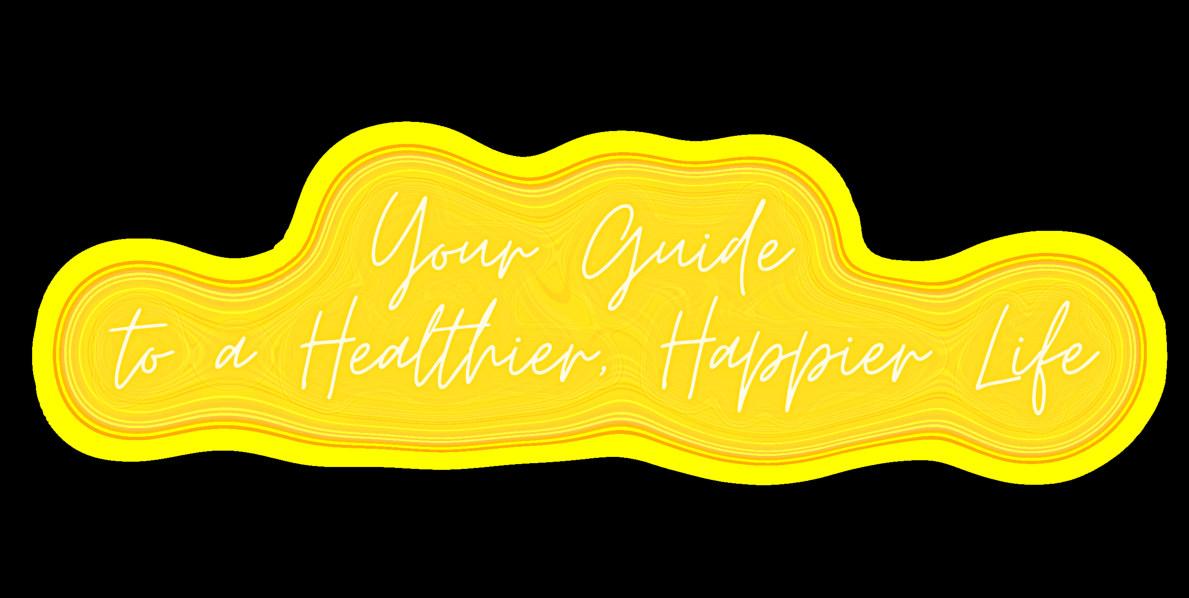
LOADS OF SPECIAL OFFERS











WIN GREAT PRIZES!
MEGA INSPIRATION
FREE POSITIVITY DOWNLOADS









A foreword by Amy Kleinhans
Mental health is so incredibly important. It's more than just a buzzword; it's the cornerstone of our well-being. Taking care of our mental health means checking in with ourselves and those we care about.
In a world that often promotes perfection and pretence, let's remember that it's okay to not be okay sometimes. It's okay to be vulnerable, to reach out to a friend, and say, 'I'm struggling.' Because, in that moment of honesty, we find strength and healing.
So, let's be real, let's be authentic, and let's be there for each other. Reach out, check-in, and remember that you are never alone in this journey.

“Your mental health is a garden, and self-compassion is the water that nurtures its growth. Be gentle with yourself”


About 6 years ago, I realised that we have multiple wines, but that we do not have a celebratory wine. That's how Amelia, my Cap Classique was born!
Amelia means “to make better”; my intention and life direction are always inspired by this notion. May we celebrate the happy moments, the big moments, the small and the mundane moments, but let’s remember to celebrate all the beauty and joy that this life has to offer!
www.amykleinhansthebrand.com


“This wine is a true testament to Amy's passion for winemaking and her dedication to creating a wine that truly represents the beauty and elegance she embodies.”



While we all may have feelings of sadness or low mood at times which is completely normal, some people experience these feelings more intensely and for longer periods.
Feeling depressed can feel similar to heavy sadness and may result in expressing emotions through crying. However, feeling depressed can impact your ability to function in everyday activities such as work, school, at home, in relationships or social situations. When somebody has depression, they feel a variety of emotions, including sadness, hopelessness, loneliness, helplessness, lack motivation, no energy and may even have thoughts of suicide. If these feelings persists for at least two weeks, there is a need to see a Mental Health Professional.
Depression often has multiple causes, including biological, psychological, and social causes which can include: Family historyhaving a family member who has
depression or another mental illness:
Stressful events - stressful or traumatic events, such as relationship issues (divorce, separation, break-up), illness, bereavement, trauma, financial problems, or environmental stressors
Medical illness - different diseases, such as thyroid problems, cardiovascular disease, HIV/AIDS, or many others, can cause depression
Drug and Alcohol Abuse - drug and alcohol use can both lead to and result from depression
Biological or Genetic Factorschanges in brain chemistry or family history can cause depression

Everyone is different and It's often a combination of factors that can contribute to developing depression. It's important to remember that you can't always identify the cause of depression yourself or change difficult circumstances. The most important thing is to recognise the signs and symptoms and reach out for help and support. Early diagnosis and timely intervention with treatment are always critical steps to feeling better, especially in children and teens.

Depressed mood, feeling down and sad all the time. Which can often also present as irritability, agitation or anger (in children, adolescents and men)
Not enjoying activities or hobbles that once was enjoyable
Feeling hopeless or helpless
Feeling very guilty or having low self-worth
Fatigue, loss of energy, or feeling slowed down
Restlessness and irritability
Changes in eating habits and/or in weight
Not being able to sleep or sleeping too much
Difficulty making decisions or concentrating
Withdrawing from friends and loved ones
Thoughts of death or suicide


Unfortunately, many people leave their depression untreated thinking it will go away, which may result in severe symptoms over time. The good news is that there are several types of effective psychological treatments for depression. Some people prefer to work one on one with a professional, while others get more out of a group environment. A growing number of online programs are also available. The most effective treatment for depression is a combination of medication and talk therapy.
Medication:
These are prescribed by a GP or a psychiatrist. They may help relieve some of the physical symptoms and help balance some of the chemicals in your body to help you feel better. Depression changes the way your body functions, so the medication can help. Prescribed medication takes at least three weeks to begin to have an effect, and may sometimes have side effects; however, they can be highly effective. When experiencing distressing side effects, it is best to consult with the prescribing doctor and not stop the medication suddenly. You may need to try a combination or it may take some time to find the most effective medication for you.
Psychotherapy or Counselling:
Talking to a registered counsellor, psychologist, or social worker can help you understand your thoughts and improve your coping skills. There is no one 'right' type of therapy or approach. A therapist works closely with their patients to create a plan to help with their unique needs and concerns. Psychotherapy can help patients learn ways to better cope with stress and manage their symptoms. These strategies can lead to recovery and improve functionality.

Support Groups:
After receiving treatment, a Support Group is an ideal way of receiving continuous support to help you maintain your wellbeing. It also helps you feel less isolated as many of the Support Group members are on a similar journey.
Children and youth, like adults, also suffer from depression, and may also go through challenges that make them feel overwhelmed. Some of their symptoms may not be the same as adults and their behaviour may differ from adults. Some of the different symptoms you can look out for are extreme sensitivity to rejection or failure, increased irritability, anger or hostility, difficulty with relationships, frequent complaints of physical pain or illnesses (headaches or stomach aches), frequent absenteeism from school, poor performance at school and poor concentration. You may also notice a drastic change in eating or sleeping habits, isolating themselves from family and friends, not interested in doing things that they used to enjoy, feeling tired all the time and just wanting to sleep, and no energy or motivation to do anything. And some of these symptoms may persist over several


Educate yourself: Ask your doctor or therapist for more information on depression, or look online (www.sadag.org) to educate yourself regarding depression and the effects in order to learn more about what you can do to help yourself.
Become active: Even if you can't manage an exercise routine,taking small steps daily to become active again can really help to lift your mood.
Turn to others: Turning to loved ones as a form of support can help you not to be so isolated and to gain fresh perspectives on your thinking.
Focus on your health: Eating a balanced diet and limiting substances such as alcohol and narcotics is very important in managing your depression.
Find a routine: Getting into a daily routine can help you find a way out of your slump. Include rest, exercise, healthy eating, and social time in your routine.
Get a good night's sleep: Sleep is affected by depression and, in turn, can make the symptoms worse. Managing your sleep by creating a good sleep routine can help with this.
Join a Support Group: SADAG runs numerous Support Groups nationwide that can provide a safe space to share your journey and experiences once you are feeling a little bit better.



Male depression is a serious medical condition, but many men try to ignore it or refuse treatment. Depression signs and symptoms can differ in men and women.
Men also tend to use different coping skills - both healthy and unhealthythan women do.
It isn't clear why men and women may experience depression differently. It likely involves a number of factors, including brain chemistry, hormones and life experiences.
For a number of reasons, male depression often goes undiagnosed and can have devastating consequences when it goes untreated.
While there is still the misguided belief that men don't get depressed, this is untrue. Fewer men may recognise their depression and ask for help.
One of the main reasons that depression and mental illness in general are under-recognised by men is because of the stigma attached to mental illness.
Many men see depression as a weakness and are reluctant to come forward for help. Tragically, four times as many men as women die by suicide.
As a result of seeking treatment, men have been able to get back to their jobs, families, friends and activities that they enjoyed before they began the symptoms of depression.
Often we find ourselves searching for the right words to show support to someone that is feeling depressed. Below are a few helpful responses to certain things someone may say:
"How long am I going to feel this way? It's as if I'll never get better"
Don't say: "Come on. Nothing lasts forever - you know better than that"
Do say: "I know it's scary to be in so much pain. Feelings come and go. We'll get through this together"
"Nothing I do is any good. I'll never amount to anything"
Don't say: "What are you saying? You're a highly respected engineer, you're a good father. You're blowing everything out of proportion"
Do say: "I know it's upsetting when things don't work out the way you want them to; it's upsetting for me too Failure feelings are really painful, but we'll get through this together"
"Why bother? Life isn't worth living. There's no point in going on"
Don't say: "How can you think that? You have a great job and people who love you. You have everything to live for"
Do say: "I know it feels that way to you right now, but I want you to know that you matter to me and you matter to others who love you. We'll get through this hopeless feeling together"
"I'm all alone"
Don't say: "No you're not! I'm sitting here with you right now. Doesn't my caring about you mean anything?"
Do say: "I know that you're feeling alone right now. Is there anything I can do to help? I'm just glad to be with you— together we'll get through this lonely feeling"


IS A

In this article, we will explore some tips and strategies that can help you choose happiness and live a more rewarding life.
Practice Gratitude: One of the most effective ways to choose happiness is to practice gratitude. Take time each day to reflect on the things in your life that you are thankful for. This can be as simple as appreciating the sunshine on a beautiful day, or as profound as being grateful for your health, family, and friends. Research has shown that cultivating gratitude can increase happiness and improve overall well-being.
Focus on the Present Moment: Many of us spend too much time dwelling on the past or worrying about the future. This can rob us of the joy and contentment that can be found in the present moment. To choose happiness, try to focus on the here and now. Practice mindfulness by paying attention to your breath, your surroundings, and the sensations in your body. This can help you feel more grounded, calm, and present.
Cultivate Positive Relationships: Our relationships with others play a significant role. Surround yourself with people who uplift, support, and inspire you. Cultivate meaningful connections by being present, empathetic, and authentic. Research has shown that positive relationships can increase happiness and improve overall wellness.
Pursue Meaningful Goals: Having a sense of purpose and direction in life can contribute greatly to our happiness. Identify goals that align with your values and passions. Pursue them with enthusiasm and determination. Celebrate your progress and enjoy the journey. This can provide you with power and help you feel more in control of your life.
Take Care of Your Body and Mind: Our physical and mental health are essential components of our happiness. Take care of yourself by getting enough sleep, eating a healthy diet, and engaging in regular exercise. Practice self-care by participating in activities that bring you joy and relaxation. This can help you feel more energized, refreshed, and resilient.

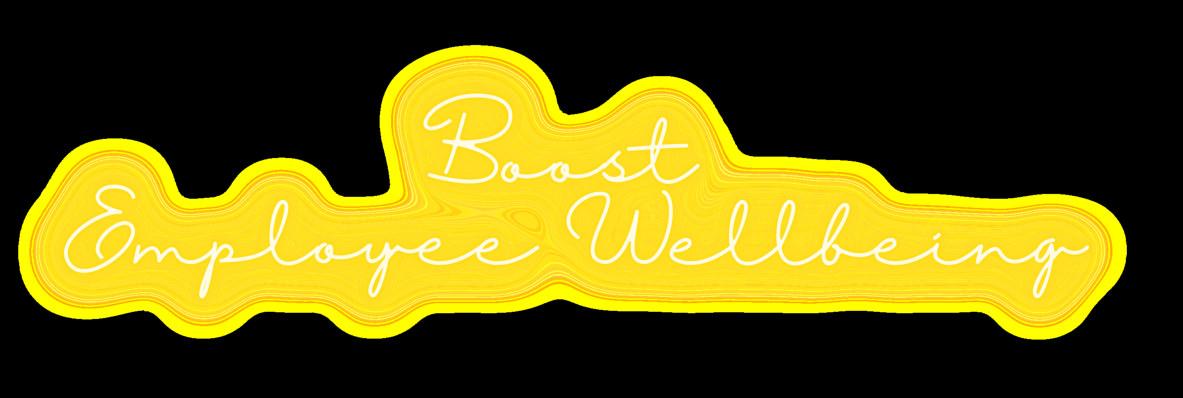
WANT A HAPPIER, HEALTHIER, THRIVING WORKPLACE?
We Empower Teams, Energize Individuals and enhance your Employees' Wellness & Mental Wellbeing Levels
OUR OFFERINGS INCLUDE
*Wellness Workshops * Inspirational Books & Products * Motivational Challenges *Positivity Toolkits * Slimming & Vitality Programs *Women’s Empowerment *Employee Engagement Sessions *Latin Dance Teambuilding *Staff Recognition & Rewards *Free Wellbeing Magazine
For more details on upcoming Wellness Workshops, Conference & Events or more info on our services and offerings please visit the website www.CorporateWellbeing.co.za or call Tanya Le Grange & Associates
Tel (073) 871 8860 / thrive@corporatewellbeing.co.za
Don’t Wait. Improve the health and wellbeing of your employees today!


TRAVELLING TO EXOTIC ISLANDS OR EXPLORING NEW PLACES IS AN ENRICHING EXPERIENCE THAT CAN POSITIVELY IMPACT YOUR LIFE. HERE ARE SOME REASONS WHY SEEKING OUT NEW VENTURES IS SO, SO VERY GOOD FOR YOU AND HOW IT CAN IMPROVE YOUR WELLBEING
Broadens your horizons: Travelling to new places exposes you to different cultures, languages, and customs, expanding your understanding of the world.
Boosts creativity: Exploring fresh landscapes and environments can inspire creativity and help you see things from a different perspective.
Reduces stress: Taking a break from your daily routine and escaping to an idyllic place like an island, or going camping, for eg, can help you feel good and relax more.
Builds confidence: Navigating unfamiliar territory can boost your self-esteem and confidence.
Cultivates empathy: Experiencing different cultures and meeting people from other parts of the world fosters empathy and understanding of others.
Provides opportunities for learning: Travelling to unique places presents opportunities for learning about history, art, and culture.
Encourages personal growth: Stepping outside of your comfort zone and trying new experiences can lead to you to get to know yourself more.

Sparks adventure: Exploring alternative destinations and seeking novel experiences can ignite a sense of adventure and excitement.
“Traveling—
it leaves you speechless, then turns you into a storyteller."
Ibn Battuta
Provides perspective: Travelling to different destinations can offer a new experience in life and help you appreciate the world around you.
Creates lasting memories: Travel experiences can create lasting memories that can be cherished for a lifetime.
So, if travelling, exploring new places and having a sense of adventure is so good for you, then why not incorporate some playfulness into your workplace too? :)

Some ideas to explore:
Introduce a weekly "fun fact" or "did you know" segment during team meetings to spark conversation and learning.
Hold an office-wide competition, such as a chili cook-off or a trivia contest, to encourage friendly competition and teamwork.
Host a colourful themed office party to create excitement in the office.
Plan a surprise birthday party or celebration for a colleague to show appreciation and boost morale.
Arrange a field trip to an interesting local attraction or museum to break up the monotony of the workweek.
Host a chilled braai or picnic where everyone brings in a dish to share and enjoy together.
Set up a game room or relaxation area with activities like darts, ping-pong, or board games to encourage breaks and stress relief.
Start a book or movie club to promote discussion and learning outside of work tasks.
Create a "fun committee" to brainstorm and plan events and activities to keep the workplace lively and engaging.
Organize a scavenger hunt in or around the office to encourage exploration and teamwork.
Hold an open mic night or create a play to showcase hidden talents and encourage creativity.
Organize a "happy hour" to encourage networking and socializing outside of work tasks.
Set up a suggestion box or feedback channel for employees to share ideas and feedback on improving the workplace.
Schedule a guest speaker to come in and share insights and inspiration with the team.
Organize an impromptu dance or fitness class to energize and encourage team bonding.
Introduce a "compliment jar" where employees can write compliments for each other to boost morale and positivity.
Start a company blog to share insights, stories, and inspiration from employees and leaders alike.
“Jobs fill your pockets, but adventures fill your soul.”
Jaime Lyn
Remember,
bringing excitement, fun, and adventure to the workplace is all about creativity, collaboration, and a willingness to try new things. With these suggestions as a starting point, you can create a workplace culture that fosters engagement, positivity, and productivity.
Travel

"The best things in life are the people we love, the places we've been, and the memories we’ve made along the way.”
- Anonymous
"Travel is the only thing you can buy that makes you richer."
- Anonymous
“Cover the earth, before it covers you”
- Anonymous
"The world is full of wonderful things you haven't seen yet. Don't ever give up on the chance of seeing them."
- J.K. Rowling
So why not plan that trip you’ve always wanted, create some magic at work or go and explore the world?
As Helen Keller once said, “Life is either a daring adventure or nothing at all.”





Wilderness is not a luxury but a necessity of the human spirit
Edward Abbey

STRESS AND WORK / LIFE BALANCE ARE HOT TOPICS AT THE MOMENT, BUT ARE WE PERHAPS NOT PUTTING UNDUE EMPHASIS ON THE WHOLE QUESTION OF STRESS?

There is no such thing as stress. There are only circumstances that you are faced with and that you then have to react to, and, depending on how you have conditioned yourself, you may then deem that circumstance to be stressful.
Each of us reacts differently to different circumstances or situations which means what is stressful for one person may be the opposite for another. Hence the reason I offer the argument that there is no such thing as stress.
It boils down to your perception of a situation that will determine whether you allow your stress response system to react or not.
Having introduced the idea that our perception of the whole stress concept may need to be reviewed this does not reduce the fact that the modern world is fraught with pressures, demands, and expectations, that, if not managed correctly, will create a state of overwhelm, which will up-regulate one’s stress response system.
What it means for you when you perceive any circumstance or situation, a comment, a deadline, an altercation, or something that challenges you as stress is that your body goes into a physiological defense pattern.
Your heart rate and blood pressure rising
Your muscles contracting causing back pain, neck pain, and tension headaches
Your digestive system slowing down leading to IBS, food allergies and intolerances, and potentially an ulcer
Your reproductive system slowing down leading to reduced libido, hormonal fluctuations, and even infertility
Your serotonin (the happy chemical) production declining resulting in a lack of motivation, reduced enthusiasm, and interest in things you used to enjoy, and even depression
An overproduction of cortisol, one of your stress chemicals, which affects your sleep pattern, causing you to wake at 1, 2, or 3 am.
These stress patterns can continue for years producing only sub-clinical symptoms or what can be referred to as dis-ease. That means that everything your doctor tests for comes up negative, in spite of you knowing and feeling that something is wrong. Eventually, your body can no longer cope, and then disease sets in.
Controlling your reaction to what you are exposed to is therefore extremely important in order to age healthily and this is easier than you may think.




Avoid catastrophizing. Think carefully before calling ‘everything’ a stressor. You can talk yourself into stress. The more you ‘tell’, and affirm to your brain that something is stressful, the more it will believe it and react accordingly.
Choose your words carefully. Adjust your vocabulary to avoid the word’s stress, hectic, overwhelmed, and ‘getting old is not for sissies’. Sending verbal signals to your brain that affirm stress, will activate your stress response system.
Avoid getting into the trap of spending time with negative people. Being exposed to repeated references to stress, not only from your own self-talk but from those around you is a further affirmation that life is indeed stressful.
Practice conscious positivity. Every morning make your very first thought on waking start with ‘I feel, happy, I feel healthy and I feel terrific’ and ‘today is going to be a great day.’
Practice the ‘It’s Just A Thing’ technique. No matter what happens, it’s just a thing, until you decide to put a label on ‘the thing’. How you choose to label ‘the thing’ is the important part.
At the end of the day, it’s all about your mindset. Committing to working on your mindset every day will be the decision that will change your life.
Introduce regular physical activity into your time budget. Expose yourself to nature and consciously focus your attention on the beauty
Commit to enjoying a healthy and nutritious lifestyle . Practice conscious breathing . When faced with any challenge…STOP! Before defaulting to the old ‘stress label’ BREATHE . Deeply in through your nose, slowly, and out through your mouth, slowly. Minimum of 5x. Surround yourself with positive, fun, and happy people. Make sure you laugh, a lot, and often.
Be sure to factor in some ‘downtime’ . Stop the ‘I feel guilty if I…..’ Paradoxically, your productivity will increase when your brain, and body are allowed time to recuperate.
Introduce something creative into your life. Drawing, painting, learning to play a musical instrument, music, singing, journaling, pottery, carpentry, creating your vision board, reading, puzzles, writing a book. There are hundreds of options. you are surrounded by.

The sooner you accept that life will never be ‘plain sailing’ all the time, that you will be challenged, and that you can control your reaction to life, the easier you will find it will be to manage life rather than let life manage you.
Article provided by Dr Kevin Lentin
His 38 years as a clinician has been aimed at helping, guiding and coaching his patients and clients to thrive... physically, mentally, neuro-biochemically, hormonally and psycho- emotionally.


RESILIENCE IS A TERM THAT’S OFTEN TALKED ABOUT IN CIRCLES, BUT WHAT EXACTLY DOES IT MEAN?
Resilience is the ability to adapt and bounce back in the face of adversity, trauma, or stress. It’s the strength to persevere and move forward despite life’s challenges. Resilience is not just an innate trait that some people possess and others don’t, but rather a skill that can be developed and strengthened over time.
Resilience is crucial for both personal and professional success. Life is full of unexpected challenges and setbacks, and those who are resilient are better equipped to handle them. Resilience helps individuals to remain calm and focused in the face of adversity, make sound decisions, and maintain a positive outlook on life.
Resilience is also important for mental health. Research shows that resilience is linked to lower rates of depression and anxiety, as well as improved coping skills. When faced with difficult situations, those who are resilient are better able to manage their emotions and maintain a sense of control.
Resilience is needed in a variety of situations, including:
Personal setbacks such as the loss of a loved one, divorce, or illness
Professional setbacks such as job loss or failure
Natural disasters or other traumatic events
In all of these situations, resilience is key to moving forward and overcoming the challenges that arise.
This article was sponsored by YuLife Insurance

Many famous people have demonstrated resilience in the face of adversity. Here are just a few examples:
Oprah Winfrey – Oprah was born into poverty and suffered abuse as a child, but went on to become one of the most successful talk show hosts and media moguls in history.
J.K. Rowling – Rowling was a struggling single mother living on welfare when she wrote the first Harry Potter book, which became a global phenomenon.
Michael Jordan – Jordan was cut from his high school basketball team but went on to become one of the greatest basketball players of all time.
Lady Gaga - Lady Gaga was dropped by her first record label and went bankrupt before releasing her debut album, which sold millions of copies worldwide.
Jim Carrey – Carrey grew up in poverty and dropped out of high school to help support his family, but became a successful comedian and actor.
Sylvester Stallone – Stallone was broke and homeless before writing and starring in the hit movie Rocky, which launched his career.
Jennifer Aniston – Aniston struggled to make it in Hollywood before landing the role of Rachel on Friends, which catapulted her to fame and success.
Adversity is an inevitable part of life. It can be caused by a variety of factors such as personal setbacks, health issues, financial problems, or unexpected events. But the way we deal with adversity can have a significant impact on our lives. Here are some ways to overcome adversity:
Develop a positive mindset: Maintaining a positive attitude can help you stay focused and motivated during difficult times. Believe in yourself and your abilities to overcome the challenges that come your way.



Seek support: Don't be afraid to reach out to friends and family members for emotional support.
T alking to someone you trust can help you gain a fresh perspective and find solutions to your problems.
Set realistic goals: Break down your larger goals into smaller, manageable steps. This can help you stay focused and motivated, and give you a sense of accomplishment in your progress.
Stay flexible: Sometimes things don't go as planned. It's important to stay open to new ideas and approaches and be willing to adapt to changing circumstances.
Remember, overcoming adversity is not about avoiding challenges or problems. It’s about developing the resilience and skills you need to face them head-on and come out stronger on the other side.
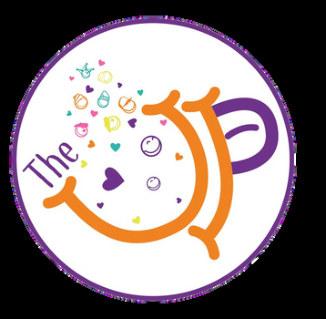

In our current world, where anxiety, challenge and adversity seem to dominate, we see that we are presented with an opportunity. A historical moment in time, an opportunity to truly be the change we wish to see - to actively choose joy, to uplift ourselves, one another, and our world simultaneously. This is our time - it’s our life, and no past can hold us back from this destiny. With divine grace, this call is to each of us - all, to step UP and embrace life with open hearts and truly be both human and KIND

Everything we share in The UP is to support humanKIND to remember the beautiful aspects of ourselves, especially the sensitive and creative ones - that got caught up thinking they were too tender for this world. The truth is, we were born to love, to live love, and to be love itself. The old paradigm of "Do, have, and be" no longer serves us. Instead, we are fiercely encouraged to flip that and really “BE” then what we “do” - will be inspired, and we will end UP with all we need to “have”.
When we focus on being the vibe we wish to see, we attract our tribe, and the doing and having, naturally follow.
In the past, we felt as though "the pressure was on," and we believed we had no control over our lives. But this is an un-truth - an old skin - so to speak - that we must shed. We actually have the ability to reprogram ourselves and live lives filled with love, peace, joy, harmony, grace, and all things wonderful. It's akin to upgrading
your inner software, and the time for this update is now.
- our Human Intelligence - is waiting for us to let go of the past outdated programs of fight, flight, freeze and all that fear paradigm. Together we can truly be LOVE - and become our best beings and dream world.


For the past two decades, at The UPwe have been dedicated to crafting “joy tools”, drawing wisdom from masters in the fields of play, laughter, and philanthropy, and this includes valuable feedback from over 50,000 beneficiaries. All have guided us on our path to being the best versions of ourselves and creating a way for countless others to do the same. Together, we can collectively contribute to a better world.


These joy tools, if practised, enhance our self-confidence and provide guidance in handling challenging situations and even challenging people.
Remember, it's our choice to play and co-create the world we wish to see. We are the ones we've been waiting for.
LLC - Look, Let Go, Choose:
When you pause to reflect on "who you're being," you gain insight into whether you're serving yourself, others, and the world simultaneously. If not, you can let go of unproductive behaviours and choose a healthier, win-win-win approach.
BRAGG:
This tool is connected to LLC and helps us move away from fear and trauma-driven reactions. Instead, it guides us toward love in action, which always results in a win-win-win situation. Breathe, Relax, Appreciate, Ground, and Give—these simple steps can lead to profound transformations in your life and the lives of those around you.
As you read these words, we trust you feel inspired to take this opportunity to choose joy, to be the change, and co-create the world of our dreams together. Our future world of love, peace, and kindness is ours for co-creating. We’re going to do it - with open hearts, and countless acts of remarkable kindness, together we not only transform our own lives, we ripple this into the world around us.

Whispers of Hope is a beautiful, striking book of though-provoking quotes that focuses on the principles of positive psychology to uplift, encourage and inspire.
It features over 160 power quotes to give your team the motivation and energy they need to keep moving forward despite what life throws at them.
As a special feature, there are also creative sparks from 25 top female SA Celebrities, TV Stars, Media Influencers, Models, Miss SA’s, Musicians, Radio Presenters, and others to bring some sunshine into everyone’s lives.
So why not improve the productivity and mental health of your staff now?
The book can also be supplemented with an interactive 6-week online mental wellbeing/positivity course to encourage teamwork and increase productivity.
It makes lovely gifts for staff and premium clients and can also be used as incentives for your sales teams or for promotions.
Pay it Forward
And make a difference in someone’s life today!
Reviews
“We’d love to use something like this as gifting for some of our top lady clients or even a Women’s Day Incentive”
Leigh Griffiths Manager IFA Events and Recognition
“It is a gorgeous book”
Charmaine SnymanBehrens Senior L&D Manager Clientele Life
“This beautiful book is really very well put together with a therapeutic daily message of hope and inspiration. It certainly is a book that everyone should have in their collection”
Jeffrey Kahn – Group Training/Development Manager (1.618) Discovery
5 copies of this lovely book for you & your team

Why not also consider joining our “Buy One Donate One”
Where charities will benefit from your generosity
Please visit the website for more details
For more enquiries or to order copies of this empowering book (021) 715 2525 or WhatsApp (073) 871 8860

For centuries, humans have known the restorative benefits of being in nature
The sounds of the forest, the scent of the earth, the sunlight playing through the leaves, and the fresh clean air give us a sense of comfort.
They ease our stress and worry and help us relax and think clearly.
Connecting with nature through our senses of sight, hearing, taste, smell, and touch can restore our mood, give us back our energy and vitality, and refresh and rejuvenate us.
Forest bathing, also known as Shinrin-yoku, is the Japanese practice of immersing oneself in nature, specifically forests, for the purpose of improving one’s physical and mental health.
It has become increasingly popular in recent years, and for good reason.
Studies have shown that spending time in nature, particularly among trees, can have a positive impact on our wellbeing.
In this article, we will explore the benefits of forest bathing and how it can promote wellbeing.

Reduced stress and anxiety: One of the most significant benefits of forest bathing is its ability to reduce stress and anxiety. Spending time in nature has a calming effect on the mind and body. Studies have shown that spending just a few hours there can lower cortisol levels, a hormone associated with stress, and decrease heart rate and blood pressure. Additionally, the sights, sounds, and smells of the forest can help us relax more.
I mproved immune function: Spending time in forests can also boost our immune system. Trees release chemicals called phytoncides, which have antimicrobial properties. Breathing in these chemicals increases the activity of natural killer cells, a type of white blood cell that helps fight off viruses and cancer. Additionally, being there can reduce inflammation, which is linked to a variety of health conditions, including autoimmune disorders, heart disease, and depression.
Increased creativity and focus: Research has shown that nature can enhance creativity and improve focus. A study conducted at the University of Michigan found that it improved performance on memory and attention tasks by 20%. Additionally, it can stimulate the imagination and inspire creative thinking.
Improved mood and mental health: A study conducted in Finland found that spending time in nature, particularly forests, was associated with a lower risk of depression. Additionally, a study conducted in Japan found that forest bathing was associated with lower levels of anxiety and depression.
Improved sleep: ‘Bathing in Forests’ can also improve sleep quality. Exposure to natural light during the day can regulate our circadian rhythm, or internal clock, which is important for maintaining healthy sleep patterns. Additionally, it can reduce stress and anxiety, which can interfere with our sleeping patterns.
If you’re interested in trying forest bathing, here are some tips to get started:
Find a forest or other natural area that you enjoy. Leave your phone and other distractions behind. Find a comfortable spot to sit or lie down and take deep breaths. Consider guided forest bathing walks, which are led by trained professionals and can help you get the most out of your experience.
Watch the sunlight filter through the leaves
Observe the movement of animals and insects
Notice the different shapes and sizes of leaves
Admire flowers blooming or the colours of spring
Take in the view of the surrounding scenery
Watch the peaceful flow of water in a stream
Savour the smell of the fresh forest air
Inhale the scent of pine needles
Smell the earthy scent of the forest floor
Notice the scent of wildflowers
Take in the aroma of herbs
Touch the softness of moss
Feel the coolness of a rock or stone
Walk barefoot on the forest floor to feel different textures
Hug a tree to feel its energy
Feel refreshed by a swim in a sparkling natural pool
Listen to the chirping of birds
Notice the sound of insects buzzing around
Listen to squirrels chattering in the branches
Enjoy the murmuring of a stream and the sound of trickling water
Hear the whispering of the wind in the trees
Bring along some forest fruits like berries and taste them
Sip on a cup of herbal tea made from forest plants
Pack trail mix for a quick snack - try and match the colours of nature from your pack
Bring a picnic basket filled with your favourite foods and enjoy them amidst the trees
Try freshly caught fish from a nearby lake
Sip on fresh water from a sparkling spring or stream
Drinking in the flavour of the forest can bring you joy and calm. In fact, there is no medicine you can take that has such a direct influence on your health as a walk in a beautiful forest.
In Japan, forest bathing is recognized as a form of preventative medicine and is covered by some health insurance plans. Forest bathing is not about exercise or hiking, but instead about immersing oneself in nature and being present in the moment. The positive effect of trees on people’s mental wellbeing lasts longer than short-term boosts to happiness.


As Frederick Law Olmstead once said,
“Enjoyment of scenery employs the mind without fatigue and yet exercises it; tranquillises it and yet enlivens it, and thus, through the influence of the mind over the body, gives the effect of refreshing rest and reinvigoration to the whole system.”
Excerpts taken from: Forest Bathing: How trees can help you find health and happiness by Dr Qing Li
Go to the beach – take in the beauty of sunsets over the sea or the ebb and flow of the tides
Nurture the shrubs and flowers you’ve planted in your garden
Spend time with animals at a petting zoo or go on a game drive
Join a mountain hiking group
Take up birdwatching
Try your luck at fishing
Go camping. Nothing like sitting in front of a campfire
Be brave. Take up kayaking or canoeing
Try you hand at surfing or bodyboarding
Get fit by rock climbing
Try trail running
Go horse riding
Swim in crystal clear mountain pools
Take up nature photography
Paint or draw outdoors
Write or journal in a quiet field
Get out into the wild and gaze at the stars
Walk barefoot on grass
Listen to the sounds of nature on your computer, such as the falling of rain, birds song or the trickling of water, if you can’t get out
Keep dried lavender or other nice smelling herbs and plants in your home

Nature has a calming effect on the mind and body and can reduce stress, anxiety, and depression. It can also improve mood, boost cognitive function, and increase physical activity.
So why not get out there today? And let the healing power of nature revitalize and calm you.

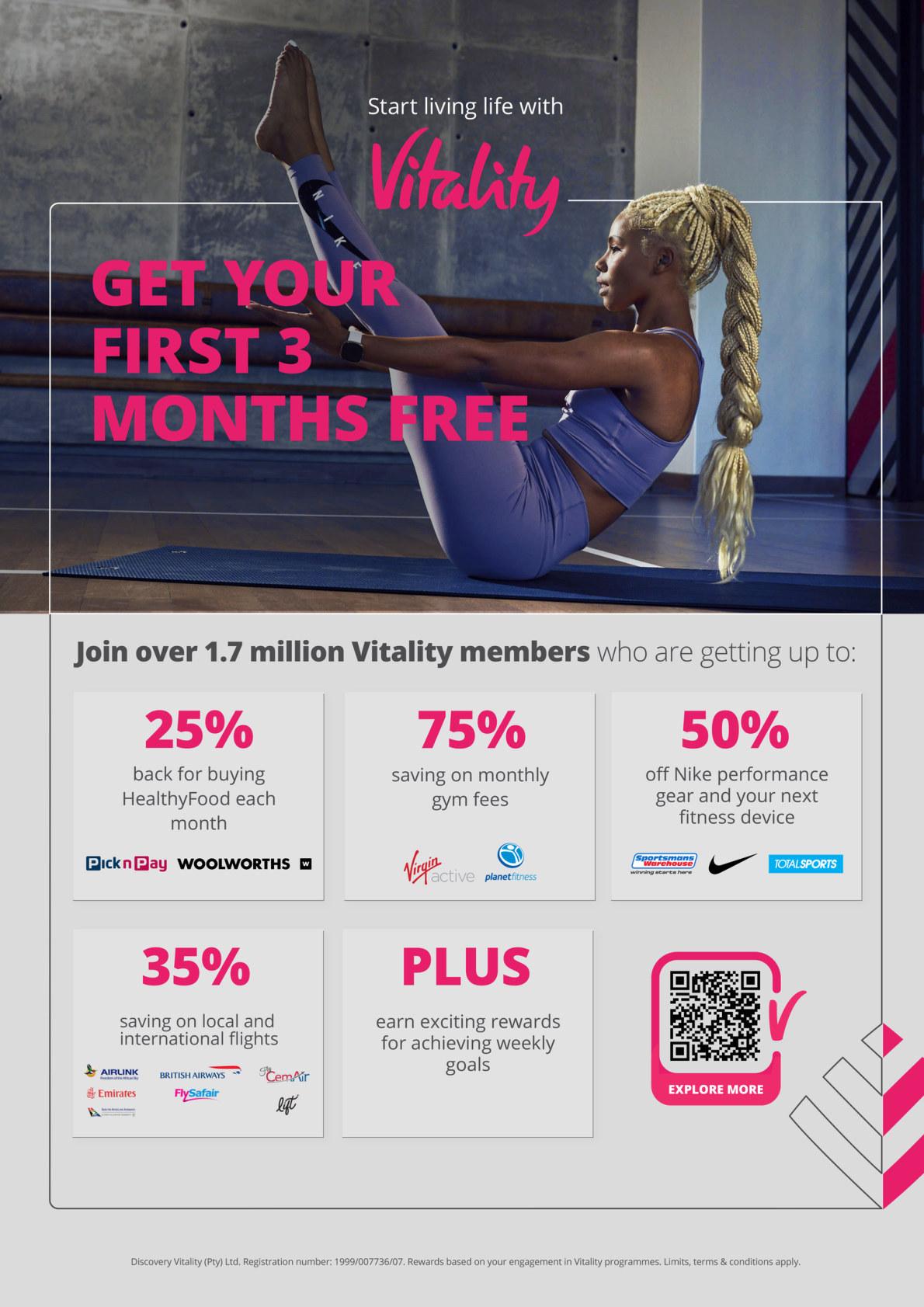
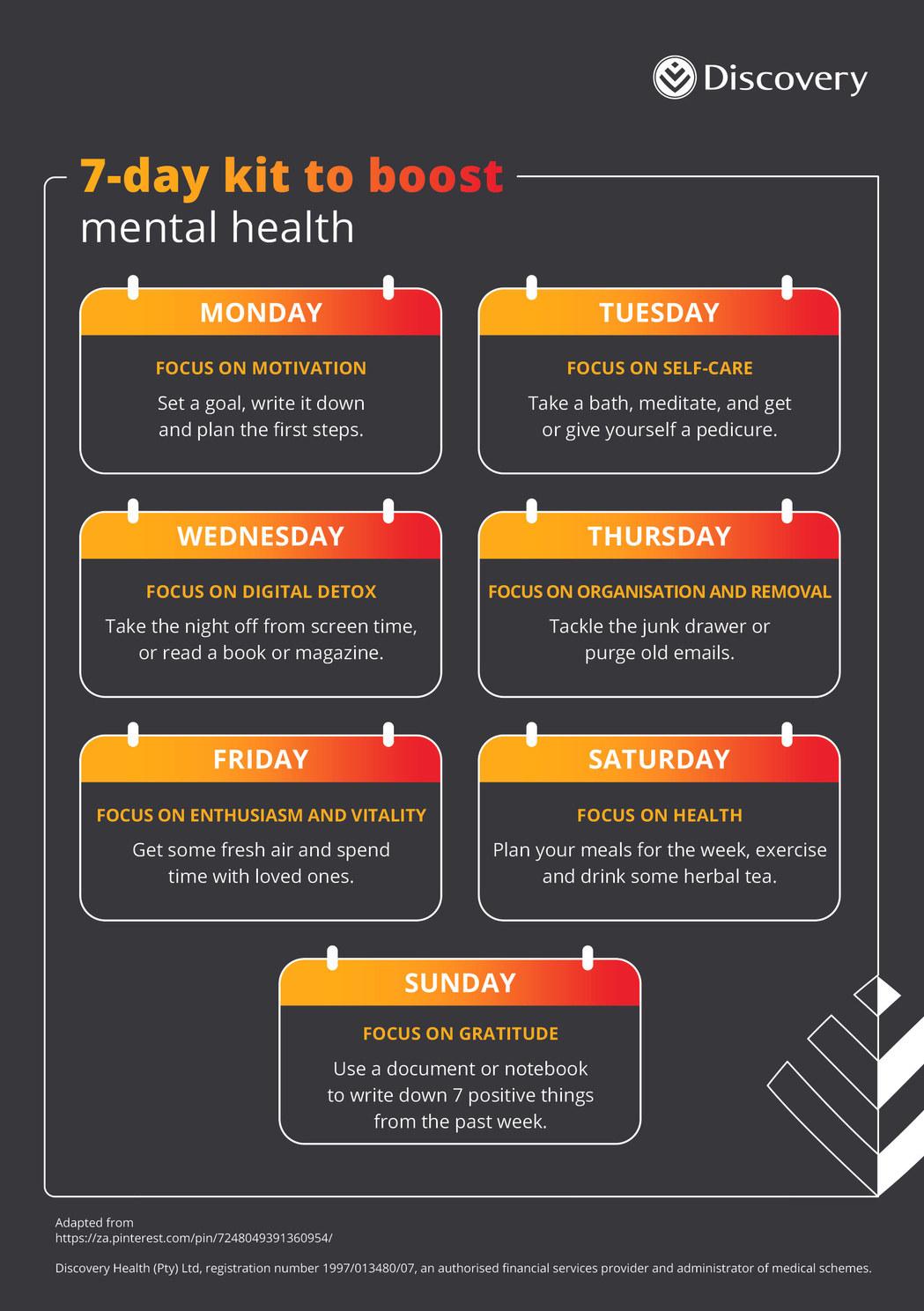




























Are you looking for ways to foster a positive environment in your workplace? Consider “paying it forward.”
By performing small acts of kindness for your colleagues without expecting anything in return, you can create a pleasant working environment that promotes a culture of kindness and generosity.
Greet your colleagues every morning with a smile and a friendly hello.
Bring in treats to share with your team.
Offer to cover for someone who needs time off.
Bring in a plant to brighten up the office.
Write a thank you note to a colleague who has helped you recently.
Share some positive feedback with your manager about a colleague who has done exceptional work.
Leave an encouraging note on someone's desk.
Ask a colleague for an opinion on a project you're working on.
Offer to help someone who is struggling with a task.
Ask a colleague about their family, hobbies, or interests.
Express gratitude to someone who has helped you in the past.
Invite a colleague to join you for lunch.
Run an errand for a coworker.
Compliment someone on their work.
Celebrate your coworkers' birthdays and work anniversaries.
Organize a team lunch to encourage bonding
Share positive news and accomplishments with your colleagues.
Avoid gossip and negative talk.

Offer support to those who are going through a difficult time.
Decorate your workspace with affirmations and motivational posters.
Participate in team-building activities and exercises.
Offer to train or mentor a new employee .
Show appreciation for your coworkers' hard work and contributions.
Create a gratitude board where employees can mention things they are thankful for.
Show appreciation for the little things that people do.

Hold a brainstorming session to encourage creativity and collaboration.
Organize a charity drive or volunteer event for the team.
Share positive feedback from clients or customers with your team.
Celebrate successes and milestones together.
Acknowledge and celebrate the unique strengths and talents of each team member.
Organize a social event outside of work.

*Secretarial
*Admin/Research
*Marketing & Design
*PR & Promotions
*Home/Lifestyle Support
*Errands & Shopping
*Pet or House Sitting
*Party Planning
*Leisure/Travel Bookings
Private Tours
*Life/Slimming Coaching
Latin Dance for Functions and more...
*Executive Support
*Project Management






















MySubscriptions ™ allows you to concentrate on services and customer relations while various features handle automated recurring billing and subscriptions. DO YOU WANT PEACE OF MIND WHEN MANAGING YOUR MONTHLY ACCOUNTS?

We provide Seamless Subscription Management ™
Signup, payments, billing and invoicing are made easy, using plans, buttons, links, and subscription management.
It provides you with recurring revenue and customer loyalty.
PAID ON TIME, EVERY





Discount coupon code / TM15 for 12 months on per transaction processing


offers simple, beautiful and natural skincare
Cutting-edge ingredients from nature’s bounty, nourish, regenerate, protect and heal the skin without the use of nasty, harmful chemicals.
Layering technology allows a core range of products to cater for all skin types and needs. Each product is a synergistic blend of plant oils, botanicals, vitamins, proteins and phytonutrients which target various skin types and conditions.
Layer your products to optimize your age defying skin regime.
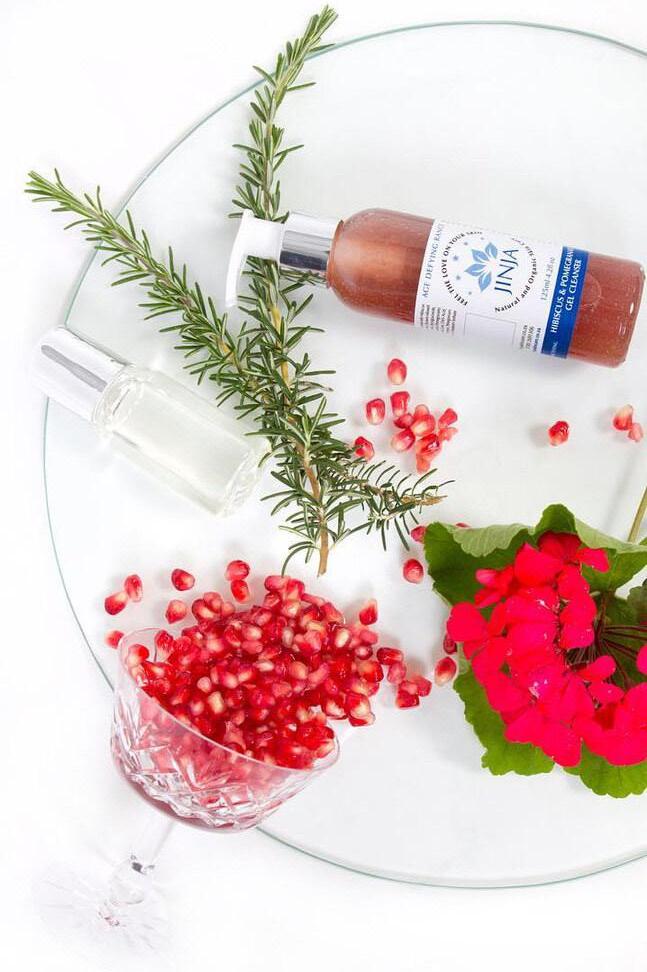
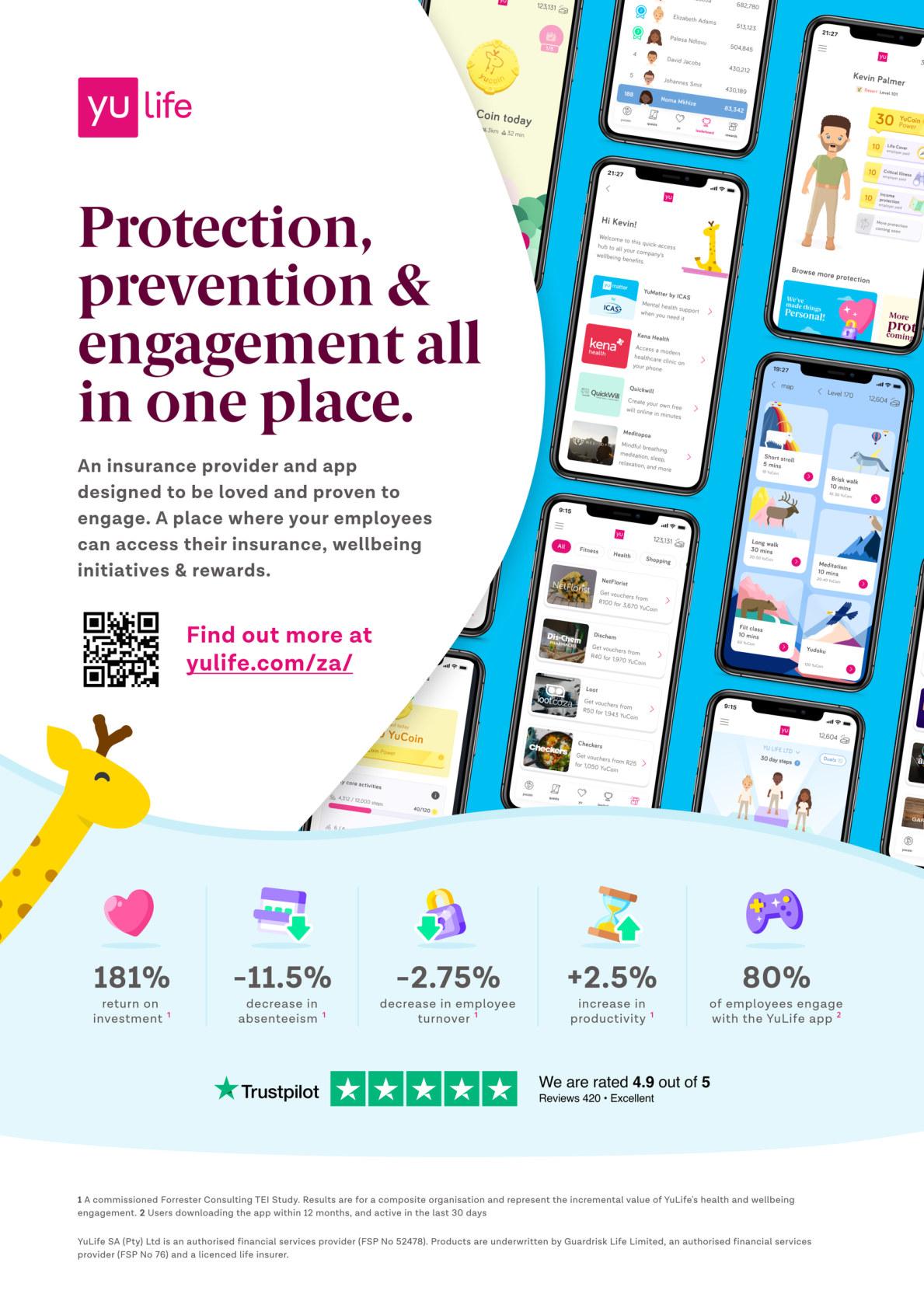
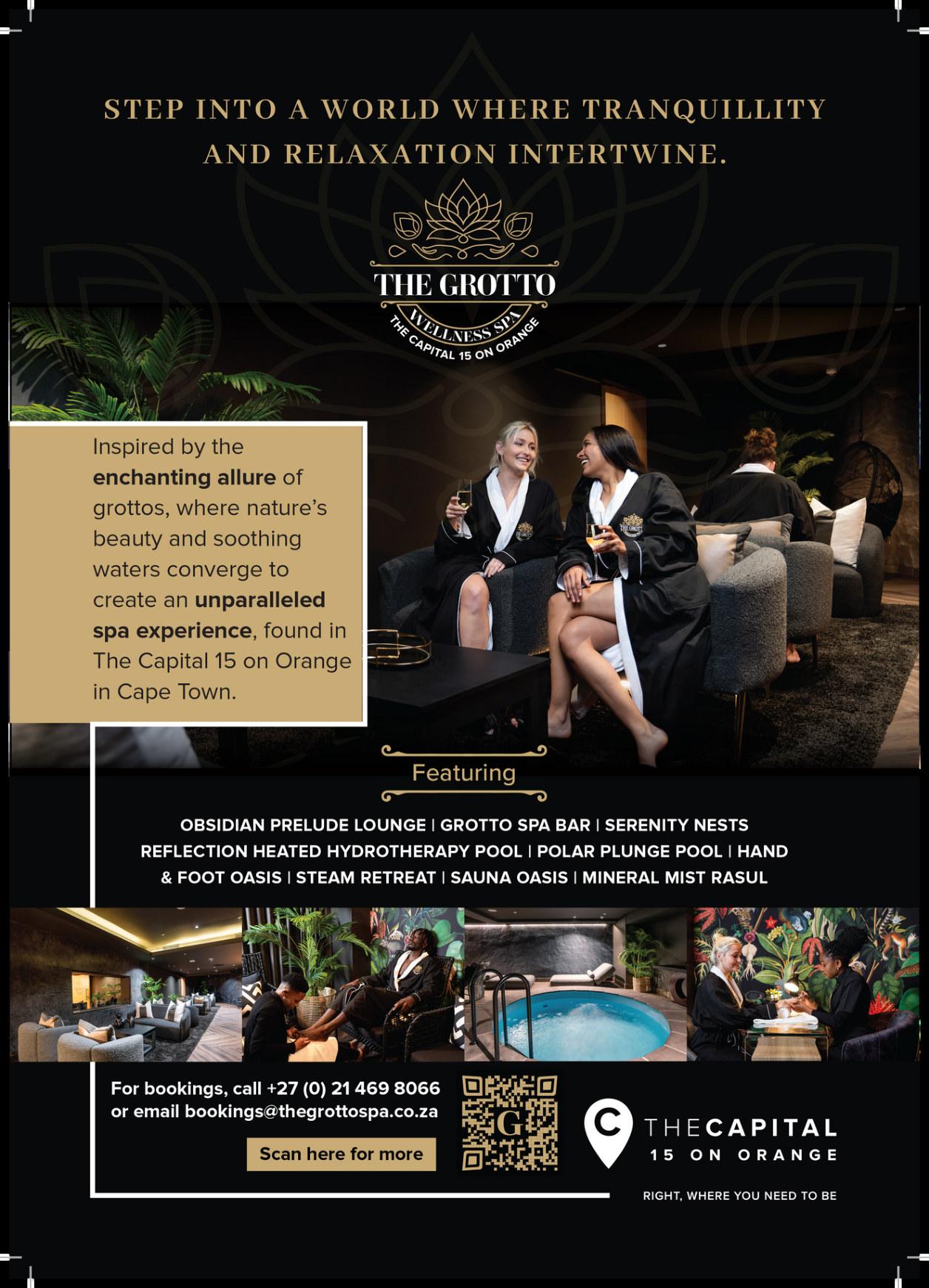
With an Energizing Latin Dance Teambuilding Session
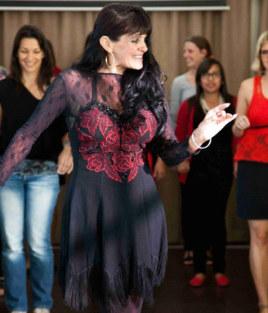
*Improve Morale & Motivation
*Build Camaraderie
*Increase Self Esteem
*Reduce Stress & Tension
*Increase Job Satisfaction of Belonging and Community
*Bond Team Members
*Develop a Sense




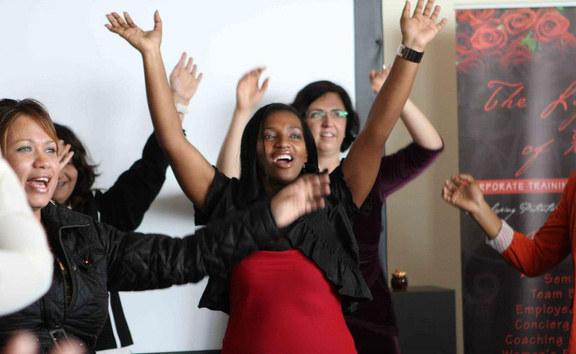

Create lasting memories & boost your employees social-emotional skills
* From R395 pp (Includes a Free Gift)
*Great Spot Prizes
Immersive, Dynamic & Interactive
For more info please contact Tanya Le Grange thrive@corporatewellbeing.co.za / (073) 871 8860
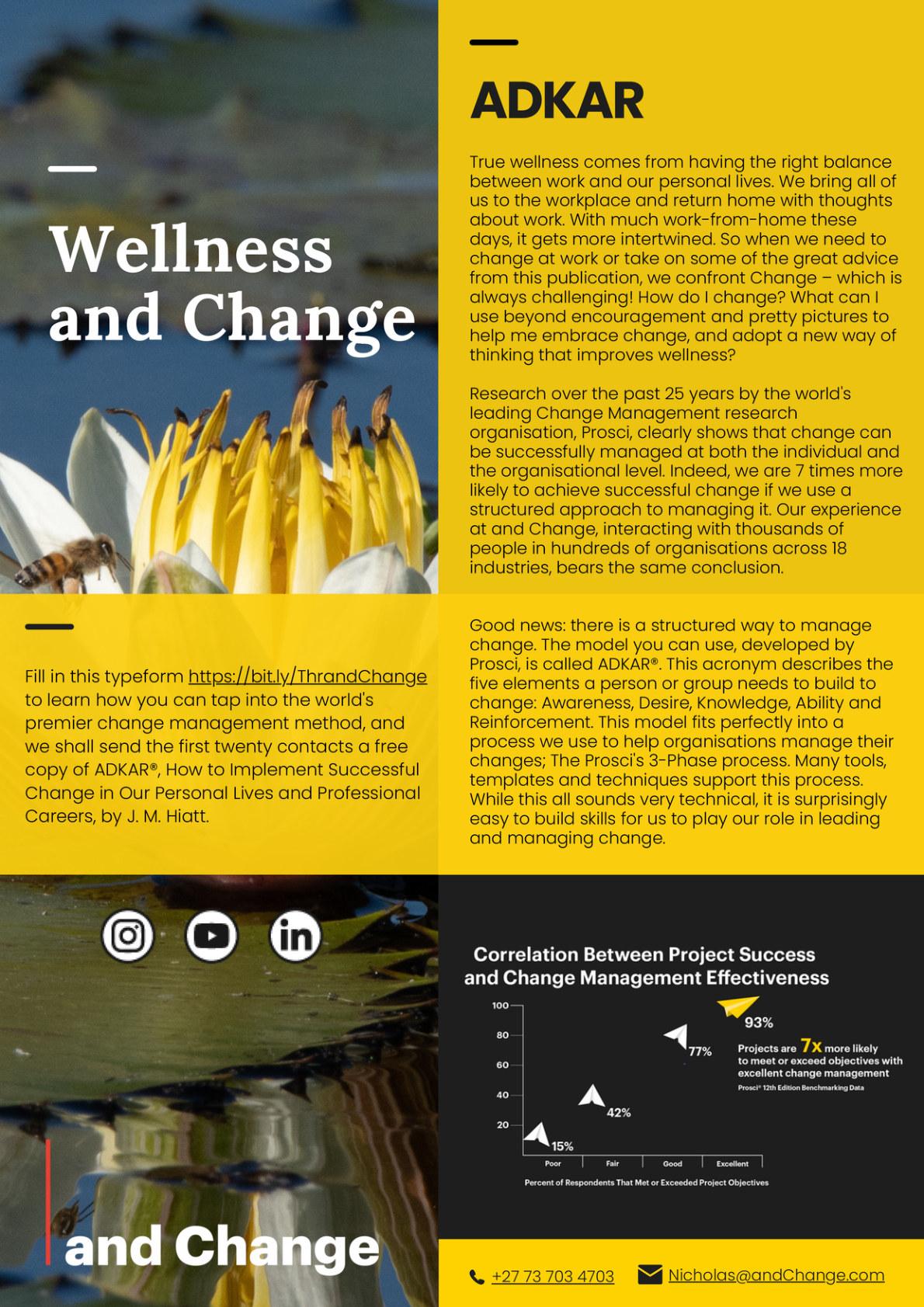



WANNA BE SLIM, FEEL FABULOUS & EMPOWERED?
The program involves a combination of International Weight Loss Techniques, Sports Psychology, Positive Mind Power Training & Advanced Coaching methods to produce results.

Self Analysis Tests
Eating & Fitness Journals
Goal Sheets & Trackers
Wellness Collages
Action Sheets/Victory Log
Inspirational Pages
Performance Checklists & Graphs
Visualization Boards
Smoothies & Low Fat Recipes
Slimming & Exercise Affirmations
Screensavers
Flashcards
Motivational Newsletter
Facebook Group Support

If you think you can't be slim..... think again
The vicious circle of dieting failure and how to break it
Empower yourself. Think slim ~ whose thoughts are they anyway?
Identify your negative wizards
How to counteract "the urge"
Our emotions and eating for comfort
Why are you overweight?
Fat habits & how to change them
How to arm yourself when real life gets in the way
Overcoming obstacles
Exercising choice rather than willpower
Healthy Eating Habits
Changing your Mindset, Changing your Behaviour
Improving your self-image and the way you think about yourself
Poised to win
Exercises that use up lots of energy
Calories, Fat, BMI, Body Fat% and why this matters
A lifestyle for a lifetime
Previous clients have lost up to 15kg in a 12 week period eating foods they love!

*Individuals with obesity, diabetes, high blood pressure, high cholesterol, or depression.
*People with joint pain, anxiety, or those with a history of yo-yo dieting.
*Individuals with a sedentary lifestyle, or those who struggle with emotional eating.
*People who want to improve their self-esteem, physical appearance, and overall health, or live a longer, healthier life.

IT STRENGTHENS MUSCLES AND BONES, IMPROVES CARDIOVASCULAR HEALTH, INCREASES FLEXIBILITY AND BALANCE, REDUCES THE RISK OF CHRONIC DISEASES, IMPROVES SLEEP QUALITY, BOOSTS MOODS AND REDUCES STRESS AND ANXIETY.


As a general rule, you should aim for a minimum of 30 minutes 5 times a week ie 150 minutes of moderate activity per week (or 75 minutes of vigorous activity per week).
Include in these sessions, strength training for all major muscle groups (twice a week too if you can).
You do not have to do all your exercises in one go. You can split your 30 minutes into 10-minute bouts.
(If you want to lose weight, keep off lost weight or meet specific fitness goals, you may need to exercise more).
Moderate aerobic exercise includes activities such as brisk walking, biking, swimming, and mowing the lawn for example.
Vigorous aerobic exercise includes activities such as running, swimming laps and aerobic dancing.
Your target heart rate should be between 50% to 85% of your maximum heart rate. This range indicates the intensity level at which your heart should ideally beat during exercise. To calculate your maximum heart rate, subtract your age from 220.



Here are the estimated figures for a 60 kg woman and an 85 kg man
Walking (moderate) 4 to 5.6 km/h: W 120-134, M 170-190 calories
Walking (brisk) 5.6 to 6 km/h: W 135-150 calories M 190-210
Jogging 6.5 km/hr: W 240 calories, M 340 calories
Running 9.5 km/hr: W 315 calories, M 450 calories
Cycling: W 200-225 calories M 280-315 calories
Swimming (breaststroke): W 300 calories / M 400 calories
Salsa Dancing: W 200 calories / M 250 calories
Pilates: W 175 calories / M 240 calories
Zumba: W 300 calories / M 400 calories
High-intensity Interval Training: W 300 calories / M 400 calories
Hiking: W 200 calories / M 266 calories
Jumping Rope: W 300 calories / M 400 calories
Martial Arts: W 300 calories / M 400 calories
Stair Climbing: W 225 calories / M 300 calories
Calisthenics: W 135 calories / M 180 calories
Squash: W 300 calories / M 400 calories
Grappling or Wrestling: W: 225 calories / M: 300 calories
Vacuuming: W 75 calories / M100 calories
Car Washing: W 125 calories / M 166 calories
Sweeping: W 90 calories / M 120 calories
Gardening: W 150 calories / M 200 calories
Watching TV/Computer: W 40 calories / M 50 calories
Sleeping: W 23 calories / M 30 calories
As you can see, activities that involve more muscle groups or more intense movements, will generally burn more calories than those that are less intense or focus on smaller muscle groups.
NB: It's important to note that these are only estimates, and the actual number of calories burned during exercise can vary based on a number of factors, such as age, fitness level, and the intensity of the activity.
So, get moving, as physical activity will not only help you to maintain a healthy weight, but it will also improve your general quality of life and give you more Joie de vivre!

Smoothies are a popular and convenient way to consume a variety of nutrients in one delicious drink. The basis of a smoothie is a mixture of fruits and vegetables, along with liquid and sometimes additional ingredients like protein powder and ice or frozen fruit/veg to thicken.
To make a good-tasting smoothie, it’s important to balance the flavours and textures of the ingredients.
Choose ripe, high-quality fruits and vegetables . This will ensure that your smoothie is naturally sweet and flavourful.
Balance sweet and tart flavours by combining fruits like bananas or mangoes with berries or citrus fruits.
Add a liquid component to help blend the ingredients and create a smooth consistency. Popular options include almond milk, coconut water, or plain water.

Include healthy fats like nut butter, avocado, or chia seeds to help keep you feeling full and satisfied.
Don’t forget about protein! Adding protein powder or plain/greek yoghurt can help make your smoothie a more balanced meal or snack.

WHEN IT COMES TO INGREDIENTS, THE POSSIBILITIES ARE ENDLESS.
HERE ARE SOME POPULAR OPTIONS TO CONSIDER:
Fruits: bananas, berries (strawberries, raspberries, blueberries), mango, pineapple, peaches
Vegetables: spinach, kale, cucumber, carrots, beets
Liquid: almond milk, coconut water, water, dairy milk
Healthy fats: nut butter (peanut, almond, cashew), avocado, chia seeds, flax seeds, coconut oil
Protein: protein powder (whey, pea, hemp), Greek yoghurt, tofu
Experiment with different combinations of ingredients to find your favourite flavours and textures. Smoothies can be a great way to pack in a variety of nutrients and make healthy eating more enjoyable and convenient.

Spinach Banana Smoothie
2 cups spinach, 1 banana, 1/2 cup almond milk, 1 tbsp honey
Orange Carrot Smoothie
2 oranges, 1 carrot, 1/2 cup orange juice
Berry and Beetroot Smoothie
1 beetroot, 1 cup mixed berries, 1/2 cup almond milk, 1 tbsp honey
Pineapple Mango Banana Smoothie
1 cup pineapple, 1 cup mango, 1 banana, 1/2 cup coconut water
Kiwi Strawberry Smoothie
2 kiwi fruits, 1 cup strawberries, 1/2 cup orange juice, 1/2 cup plain yoghurt
Ginger Pineapple Smoothie
2cm piece of ginger, 1 cup pineapple chunks, 1/2 cup coconut water, 1 tbsp honey
Peach Banana Smoothie
1 cup peaches, 1 banana, 1/2 cup almond milk, 1 tbsp honey
Mixed Berry and Spinach Smoothie
1 cup mixed berries, 2 cups spinach, 1/2 cup almond milk, 1 tbsp honey
Chocolate Mint Smoothie
1 scoop chocolate protein powder, 1/2 banana, 1 tbsp fresh mint leaves, 1 cup almond milk, 1 tsp honey
Banana and Cinnamon Smoothie
1 banana, 1 scoop vanilla protein powder, 1 tsp cinnamon, 1 cup almond milk, 1 tsp honey
Blend all until smooth and enjoy these healthy, delicious drinks!


WHICH DO I CHOOSE... SELF-CARE OR SELF-LOVE TO SUPPORT MENTAL WELLNESS? BOTH OF THESE TWO CONCEPTS HAVE BECOME INCREASINGLY POPULAR IN RECENT YEARS.
THEY ARE EQUALLY CRUCIAL FOR OUR WELL-BEING AND HELP US LEAD HEALTHIER, HAPPIER LIVES
Self-care is all about taking care of ourselves and our needs, while self-love is about accepting and appreciating who we are.
It helps us manage stress, reduce anxiety, and prevent burnout. When we neglect our self-care, we are more susceptible to illness and disease, and our quality of life can suffer. Taking care of ourselves should be a top priority, but many of us struggle to make time for it.
Here are some examples of self-care activities you can incorporate into your weekly routine:
Take a bubble bath and light some scented candles
Listen to your favourite music or inspirational podcast
Take time out to read a feel good book or watch a heartwarming movie
Try a new healthy recipe and enjoy a nourishing meal
Spend time with loved ones
Get a massage or engage in some form of bodywork
Take a break from social media and technology
Treat yourself to a spa day or a home pampering session
Spend time doing something you love
Buy yourself a card along with some fresh flowers
Take a day off and spend it on treating yourself
Go shopping and buy yourself something nice
Self-love is about accepting and appreciating who we are, flaws and all. It helps us build confidence, develops a positive self-image, and fosters healthy relationships.
When we love ourselves, we are more likely to make choices that align with our values and goals and less likely to be manipulated or pushed around by others.
A few examples to explore:
Practice positive self-talk and write down affirmations that build you up
List your accomplishments and celebrate them
Write a nurturing love letter to yourself
Set boundaries and learn to say no when necessary
Surround yourself with supportive, encouraging people
Practice mindfulness and live in the present moment
Learn to love and appreciate your body
Ask friends and family to list your strengths and embrace them
Write down three things you're grateful for
Make a list of the 10 things you’re really good at
Write down your top 3 victories and successes in life
Jot down 5 beautiful things about you
Incorporating self-care and self-love practices into our lives can significantly improve our overall wellbeing.
These practices can help us appreciate and take care of ourselves, leading to increased confidence, better physical and mental health, as well as stronger relationships.
By prioritizing our needs, we can experience a greater sense of fulfilment and contentment and become stronger and more confident in life.


Remember, progress isn't always a straight line ; it often winds through highs, lows, twists, and turns. It's in those moments - when it seems we're stuck in a never-ending battlethat we discover our resilience, tenacity, and abilities to overcome.
Embrace Growth: Difficulties can be blessings in disguise, providing us with invaluable lessons and opportunities for personal and professional growth. Embrace the challenges as a chance to learn, adapt, and emerge stronger than before.
Reframe Your Mindset: Instead of focusing on the negatives or feeling defeated, reframe your mindset. Cultivate a positive outlook and believe that you have the power to overcome any hurdle. Remember, you are capable of achieving great things!
Seek Support: It's essential to lean on your support network during tough times. Reach out to mentors, colleagues, or loved ones for guidance, encouragement, and wisdom. Collaborate, learn from their experiences, and leverage their expertise to navigate difficulty successfully.
Maintain Perspective: Keep your eye on the bigger picture. Remember your why - the reason you started on this journey. Stay focused and remind yourself of the incredible destination awaiting you once you break through the barriers.

Celebrate Milestones: Don't forget to celebrate small victories along the way. Recognising and appreciating your progress, no matter how small boosts your motivation and reminds you of your resilience.
It's easy to give up when faced with adversity but true success lies in persisting through the challenging times. Embrace difficulty as an opportunity for growth, regain your focus, and adjust your strategy if necessary.
Keep pushing, keep believing, and keep fighting! Together, we are unstoppable!

With purpose in mind, we set forth to achieve, the dreams that we hold, and the goals we believe. Through hard work and focus, we pave the way, for success to come, every day by day.
We start with a plan, a vision so clear, and take action each day, without any fear. We learn from our failures, and adapt as we go,
With resilience and grit, we continue to grow.
We surround ourselves, with those who inspire, and push us to greatness, to reach ever higher. We stay true to ourselves, and the values we keep, for it's through our authenticity, that we truly reap.
So let us remember, the principles of success, and strive towards greatness, with each and every breath. For the journey is long, but the reward is worth the strife,
And success is within
reach,
with each step of our life.

